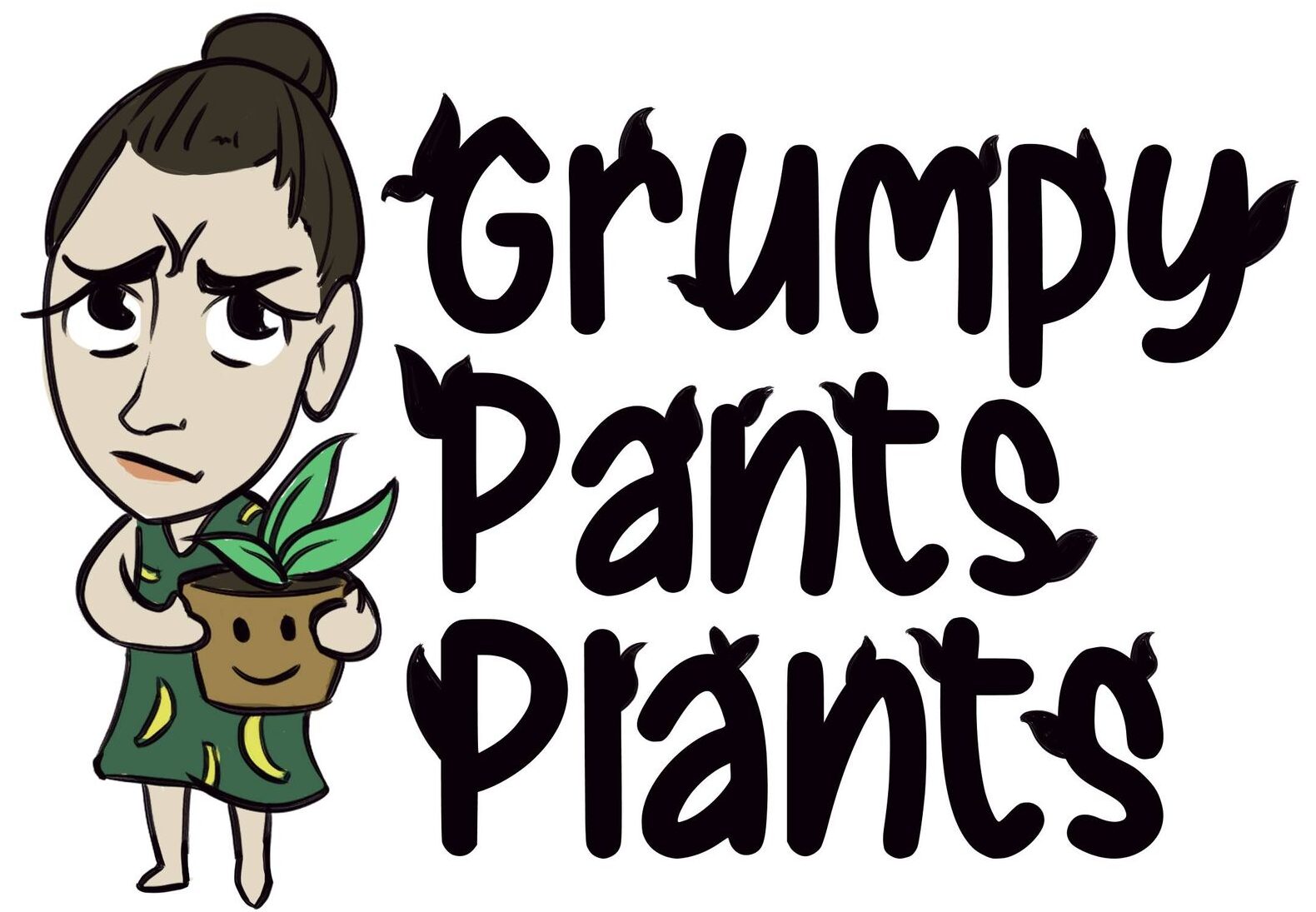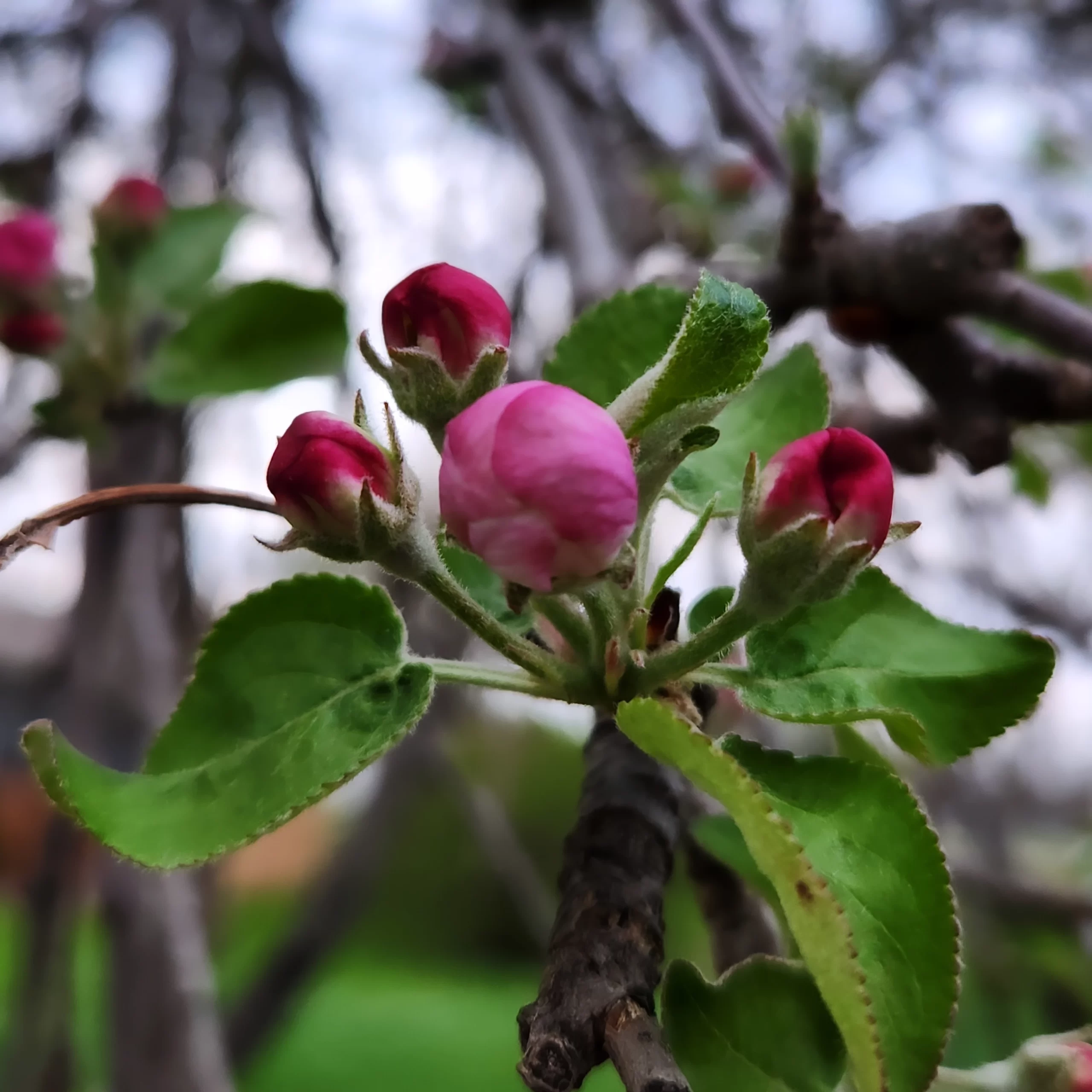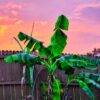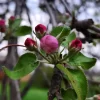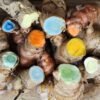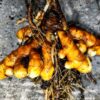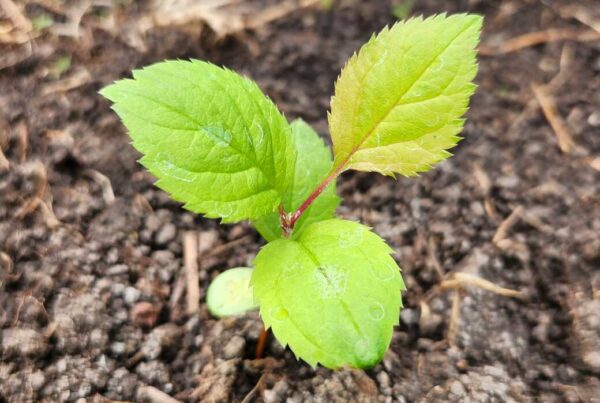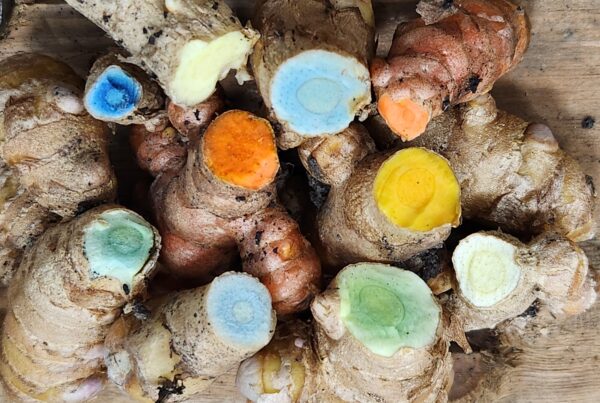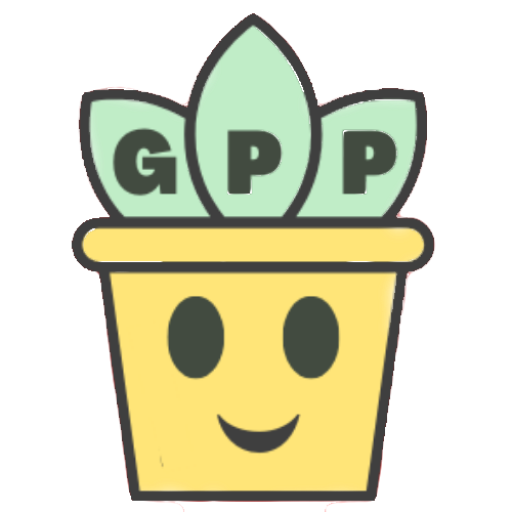This post will discuss my attempts at pollination for apple breeding. I was recently inspired to attempt this by Skillcult. He’s a guy in California whose website I stumbled upon while researching red fleshed apples. Skillcult is working to breed better apples of several varieties (including red fleshed, savory, russet, and intensely flavored). Given our climates are quite different (I’m in Iowa), I thought it might be fun to jump on the bandwagon and try to breed a better apple or two for those of us in more northern climates.
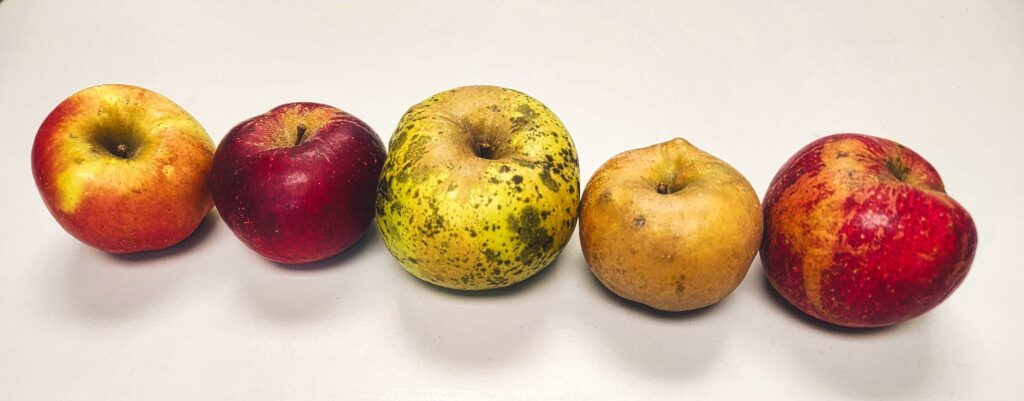
Why Breed Apple Trees
Grocery store apples are boring. They are bred to survive storage and transportation and to have a certain aesthetic. After tasting dozens of apple varieties at Seed Saver’s Exchange this past year, I have learned of the vast flavor possibilities that apples possess. I have grafted several heirloom varieties for my orchard and am excited for these. However, I believe there is plenty of room for improvement in apple flavor and variety, at least for small growers.
Many online sources, including my own state extension website, suggest that apples grown from seed will be disappointing and inferior to the parent apple. However, Skillcult claims that when both apple parents are good, around 50% of his seedling apples have been decent or better, and around 10% have been worth grafting out. He notes that most apple breeding is done for commercial growers, for whom flavor is likely secondary to storage capabilities. Thus, he encourages backyard breeders to create new apple varieties based on flavor and other characteristics important to them.
Sourcing Pollen
If you have several apple trees in your yard, or know people nearby with apple trees, you can source pollen from flowers during bloom. There’s no use reinventing content here, so check out Skillcult’s page and video on sourcing pollen in this way.
Rather than have only crosses from my (currently limited) own trees in bloom, I wanted to branch out (no pun intended). I sourced my pollen from Skillcult’s website (I specifically wanted some of his crosses, but also I don’t know of other online pollen sources). Each spring, he sells the pollen from his own trees (both heirloom and modern). Additionally, he has several experimental varieties from his own breeding. Note: his pollen is only available for a short time in the spring. He posts pollen as he collects it, so it’s kind of a mad dash to try to buy the varieties you want. I found myself compulsively refreshing his site multiple times per day. My behavior was rewarded with the opportunity to purchase the three pollen varieties I most wanted (cherry crush, pinker lady, and jellybean cider). I also managed to win an envelope of past year’s pollen to try for experimental purposes.
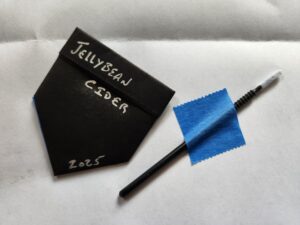
Pollination on Grumpy Pants Acreage
Prior to bloom, I placed mesh bags over several branches with flower buds. Each day I checked to see if any blooms were open. The first morning I noticed some open flowers, the sky was overcast. It was incredibly windy and we were under a tornado watch. I probably should have waited a day, but I wanted to make sure I did not miss my bagged blooms. The pollen on my applicators may have all blown away (or been swept away by the rains later that night). I re-pollinated these flowers the next day, as I figured it was better to over-pollinate than under-pollinate. My efforts continued throughout bloom season and I marked any attempted pollinations with flagging tape. My neighbor probably thinks I’ve lost my mind. I’m okay with that.
I’m probably a bit impatient, so I attempted to learn how long it takes for pollen to actually pollinate an apple. I learned that the pollen must germinate and make a tubule to reach the ovules of the flower. This article suggests that time to pollination depends on many factors. Ambient temperature, apple variety, and pollen variety all can impact time to pollination. Therefore, when using pollen from new varieties, it is safe to say that nobody knows quite how long it will take (but likely between 5 and 7 days).
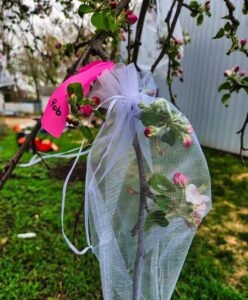
Pollination Goals
If pollination goes well, these bagged blooms will be fertilized and produce apples. It is the seeds, however, not the apples, that are the interesting piece here. The seeds in these apples will have genetic contributions from both the parent tree and the pollen tree, meaning they will grow into unique varieties of apples. This season I am trying crosses to make cold-hardy red fleshed apples and crosses to make strongly flavored apples.
If all goes well, this fall I will collect the seeds from any hand-pollinated apple crosses. Seeds will be stratified in the refrigerator in damp sand over the winter. Each seed that sprouts will be started indoors and then planted in my seedling bed next spring. In 6-8 years, perhaps I will have the opportunity to taste some new, exciting apple varieties and share them with this community.
Pollination Updates
Pollination is now complete. My final list of crosses for the spring 2025 season include the following:
Fireside tree crossed with cherry crush, golden russet, jellybean cider, jujube, pinker lady, and rubaiyat
Honeygold tree crossed with jellybean cider
McIntosh tree crossed with cherry crush, golden russet, jellybean cider, and pinker lady
Next year I hope to have many more parent trees blooming for additional variety (potentially honeycrisp, frostbite, liberty, golden russet, ashmead’s kernel). This is the first year honeygold has flowered, so I only had a few blooms to pollinate. Given my excitement about jellybean cider’s potential for amazing juice, I prioritized it over other varieties this year.
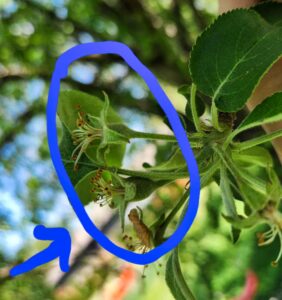
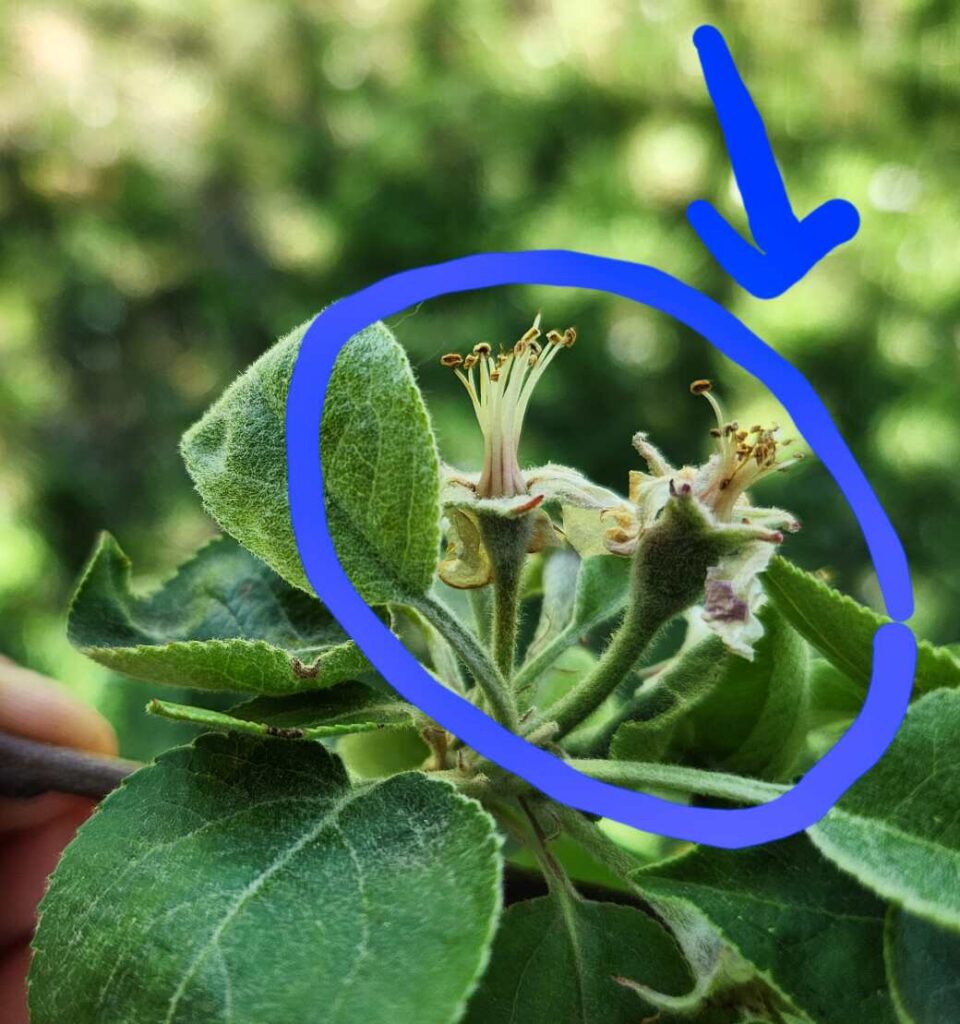
As of mid-May, it appears that at least some of my crosses have been successful. Above you can see two photos of fireside blooms that appear to have accepted pollination (with jellybean cider pollen). The blooms with the arrows are thicker and more rounded, likely indicating a growing fruitlet. I have confirmed that Fireside, McIntosh, and Honeygold are not self-fertile, meaning that any apples in these bags should theoretically be from my intentional crosses.
More Pollination Updates
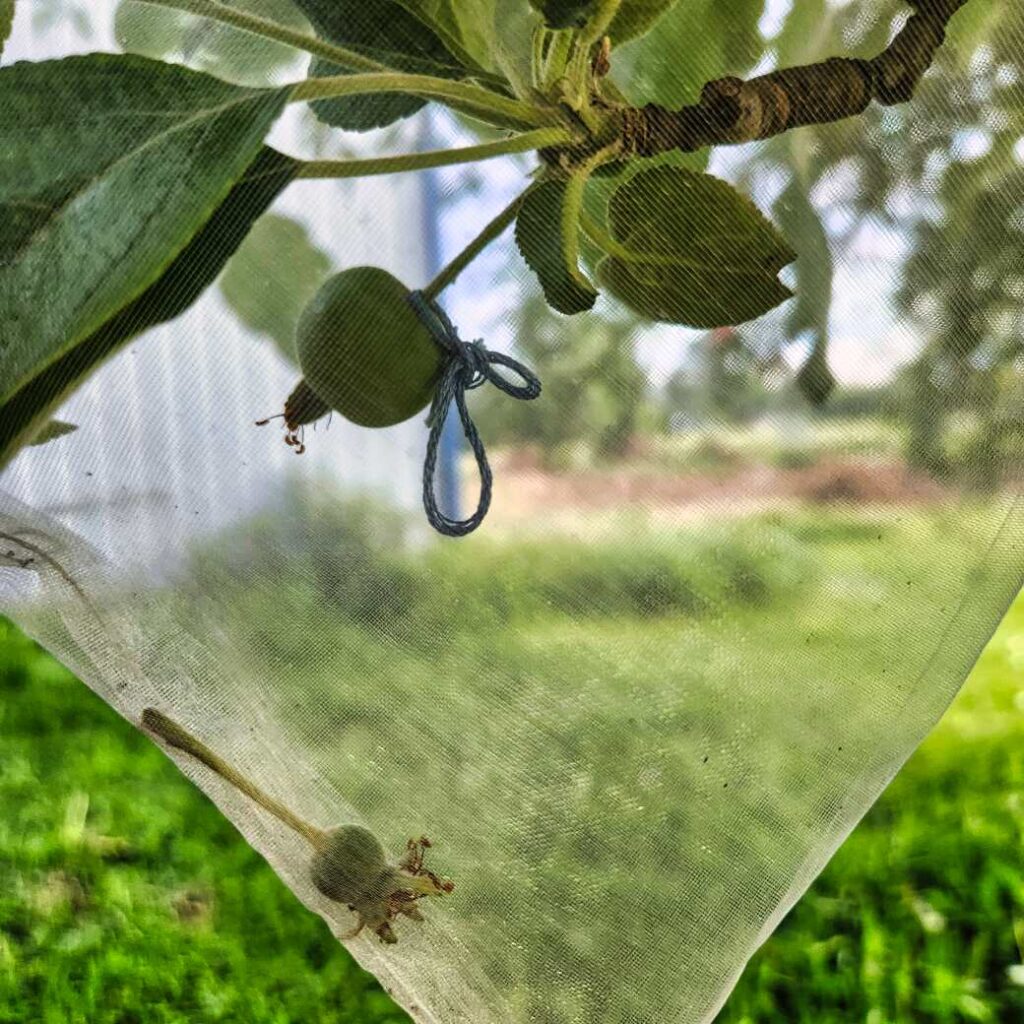
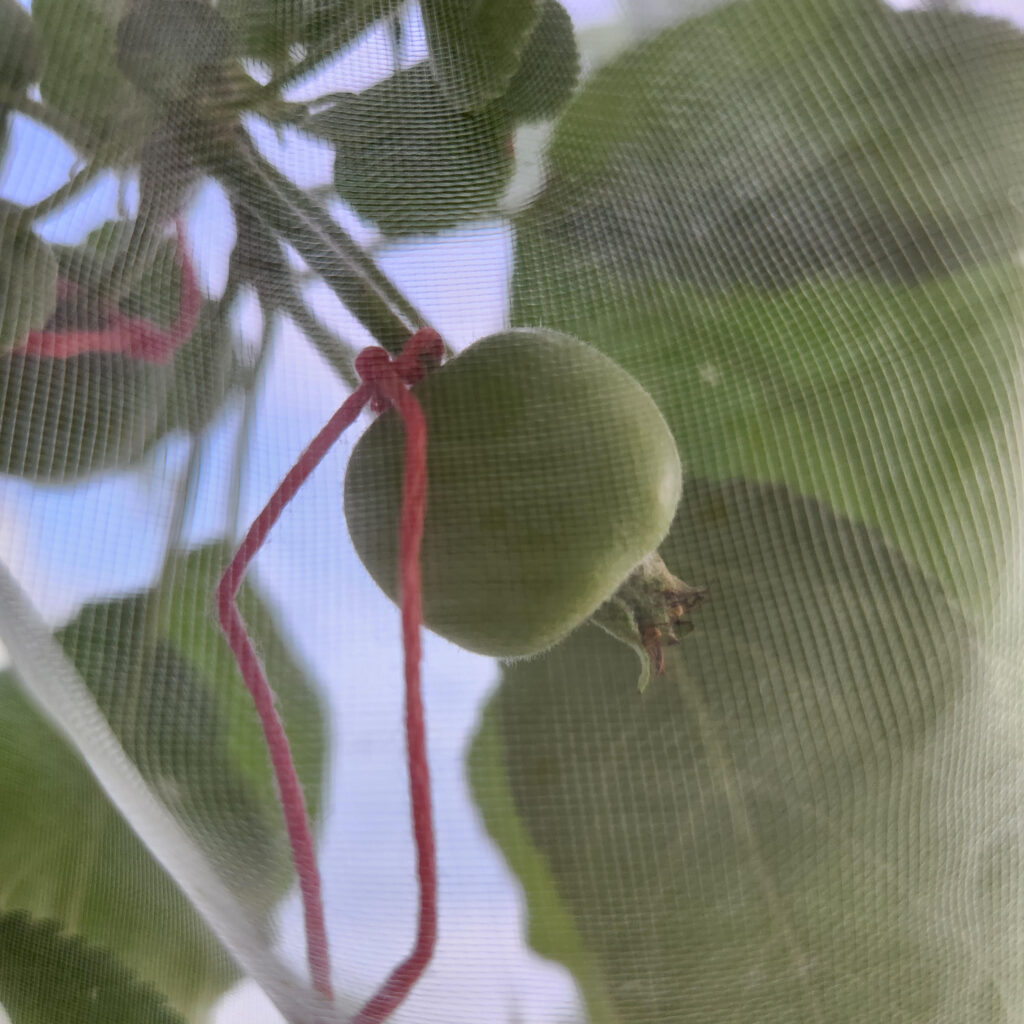
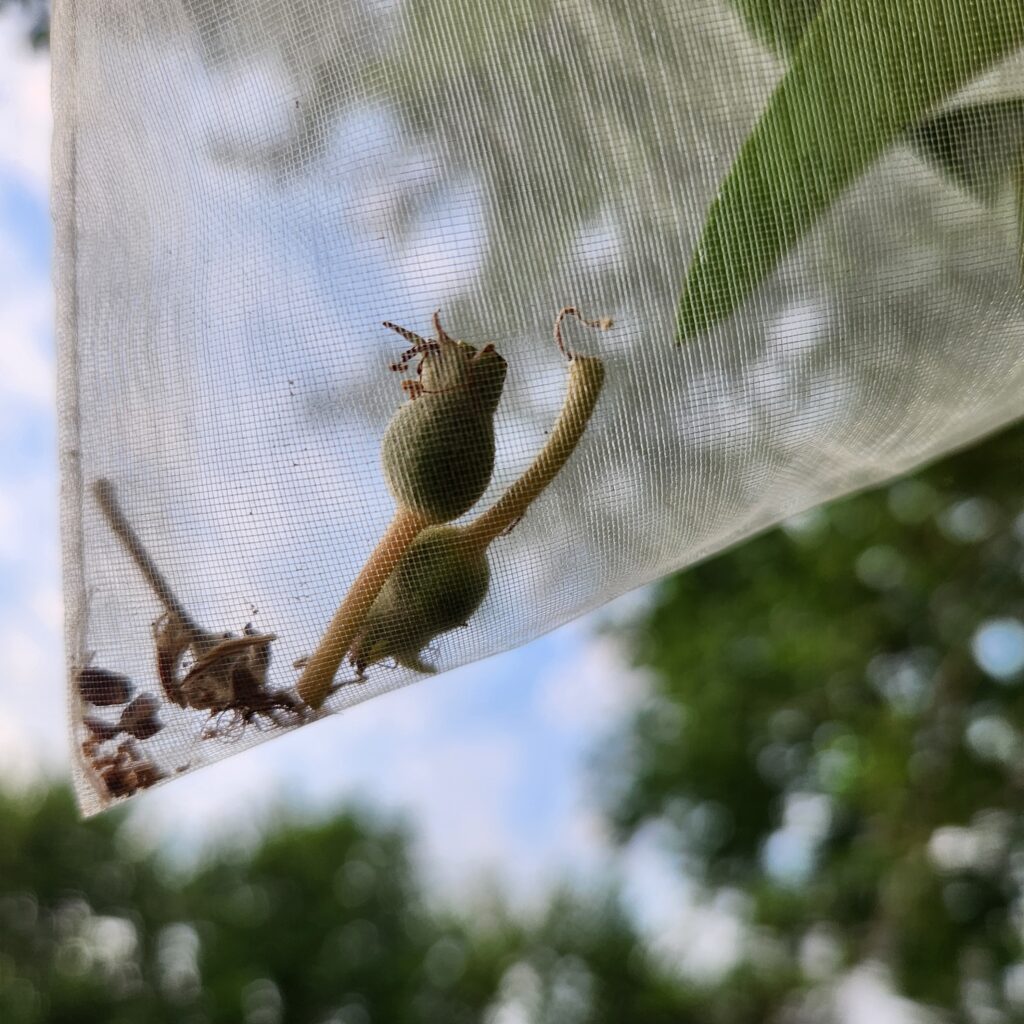
As of the end of May, fruitlets from the crosses are looking good. Those that are most likely to be my intentional crosses due to location in the bag (i.e., being toward the middle so bees absolutely could not have pollinated the blooms) have been marked with embroidery floss. These apples will be priority for seed saving. Due to the unseasonably hot weather this spring, June drop is happening now. Several small fruitlets have disconnected from the tree, leaving larger apple fruitlets to grow. This is normal and to be expected.
Of note, apparently organza mesh bags are not complete bug-proof. Some crosses have been completely munched by an insect pest who was long-gone by the time I found the problem. Said pest found my honeygold crosses to be the tastiest and ate them all. Therefore, there will be no honeygold apple crosses this season. However, so far this pest has not touched my fireside or mcintosh crosses. These crosses are doing well; especially the cherry crush and pinker lady ones.
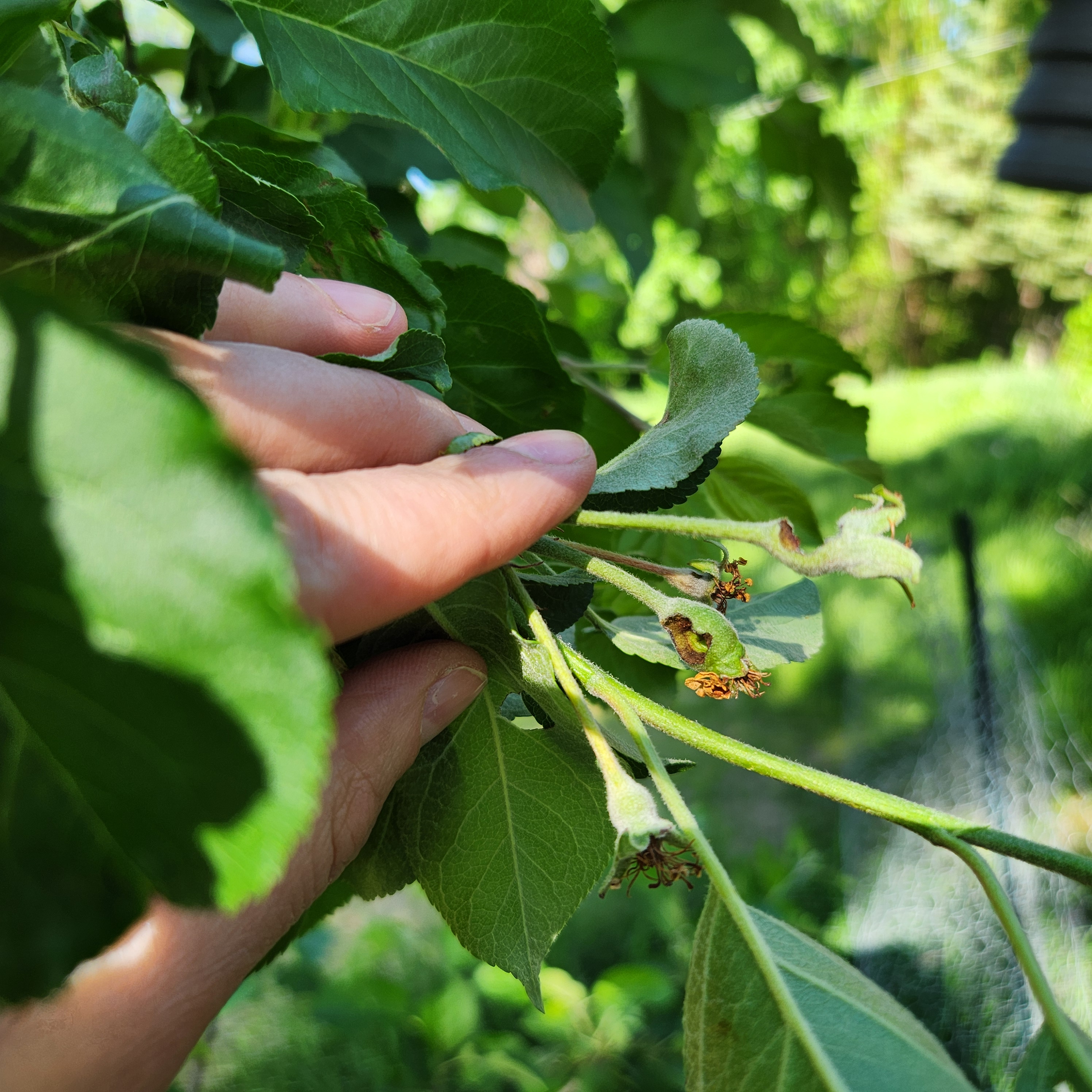
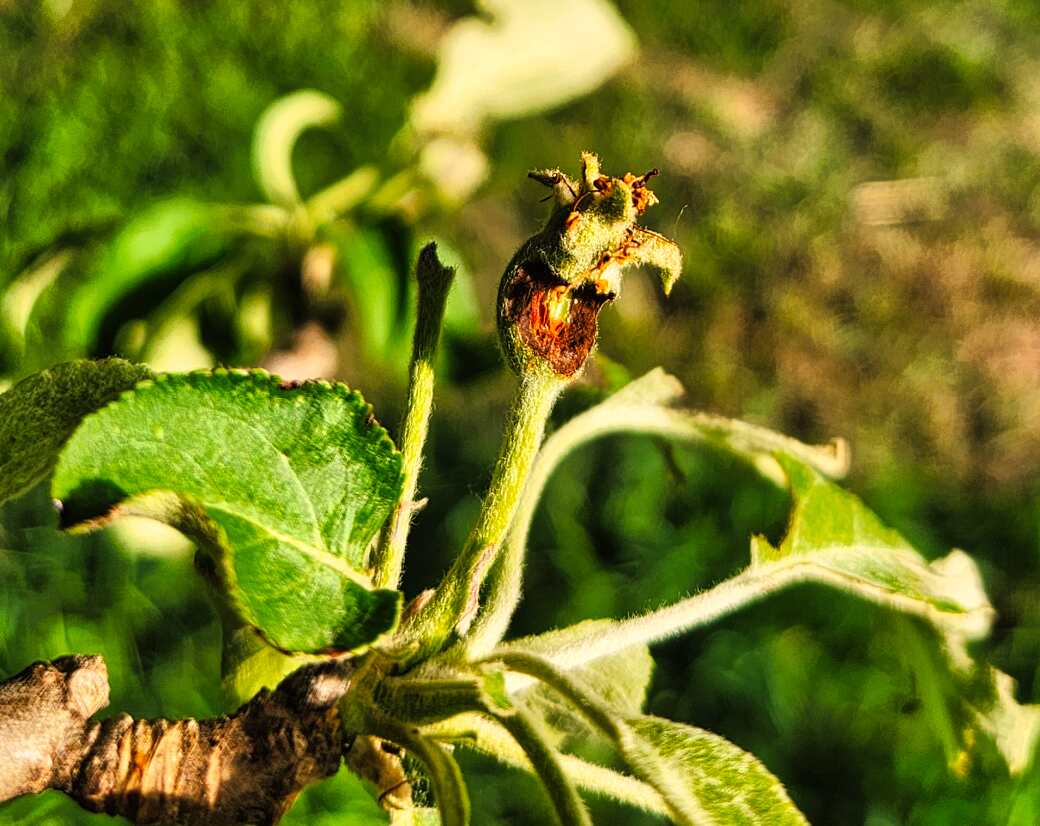
Interested in these crosses? Depending on fruit set for these pollinations, I may have more seeds than I can plant. Reach out if you’d like to be notified if I have extras.
Does old pollen work?
It’s likely best to use fresh pollen. However, as noted above, I managed to snag a free envelope of last year’s (and older) pollen from Skillcult. I’ll be attempting to pollinate with it and will update whether or not any of these flowers produce any fruit. His blog suggests that it can work, but may not work as well.
Have you attempted pollinating apples to breed new varieties? Do you have any of Skillcult’s trees growing in a northern climate? I’d love to hear about your experiences!
